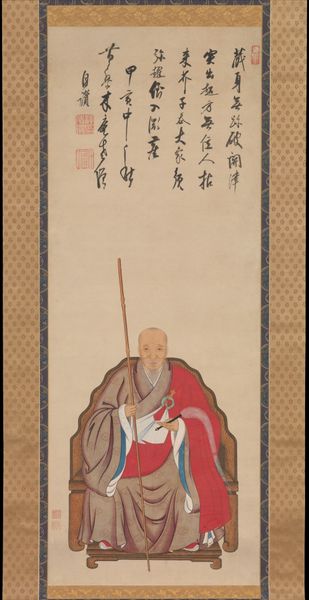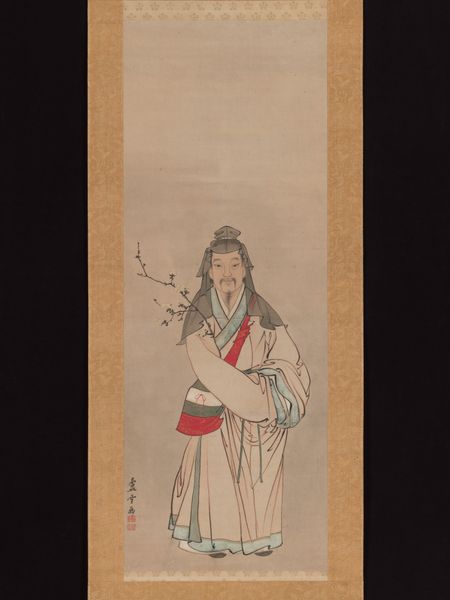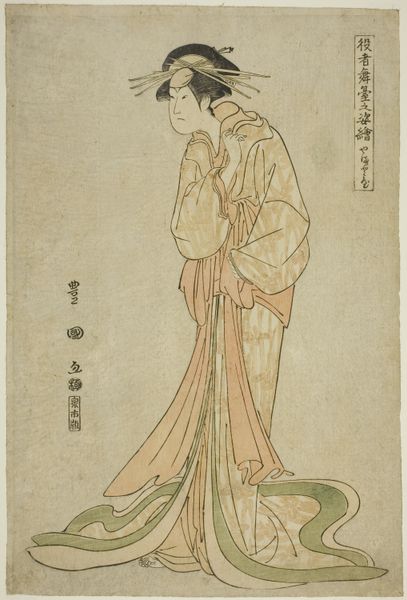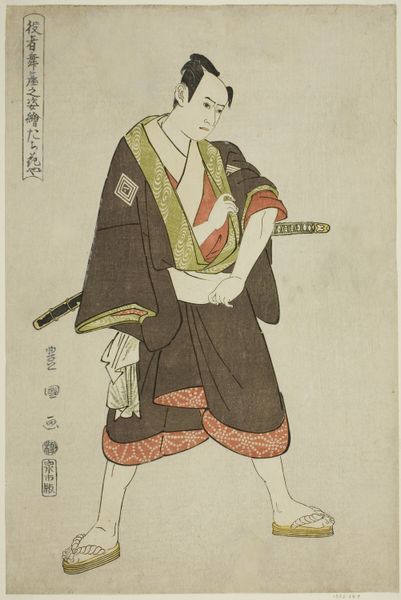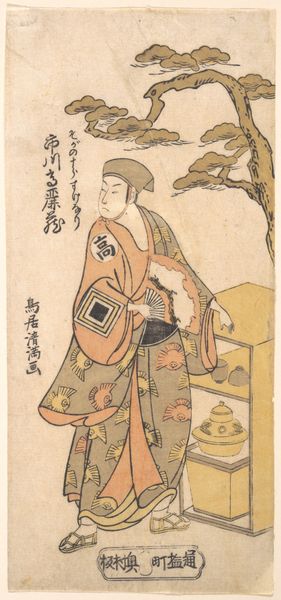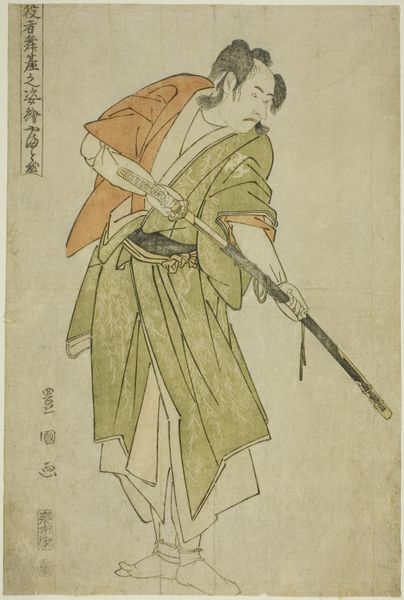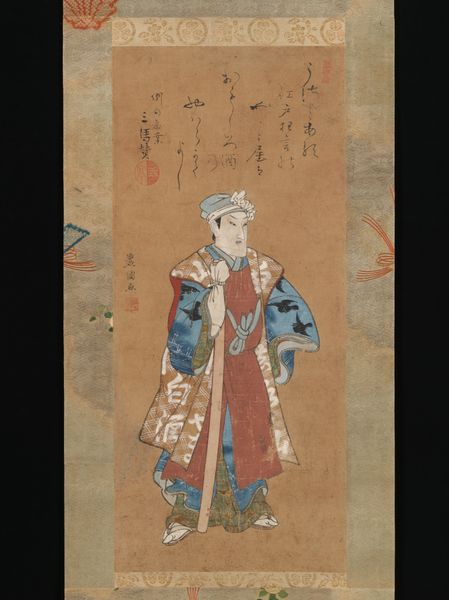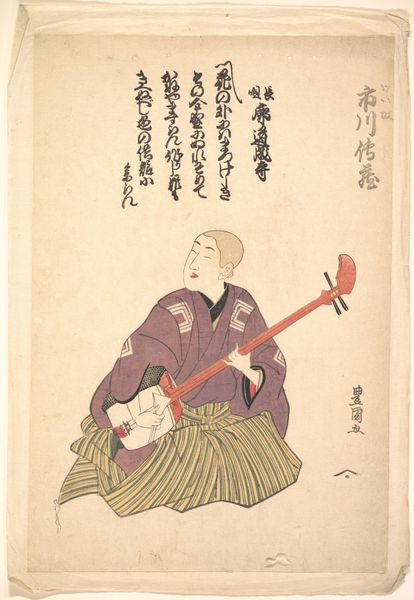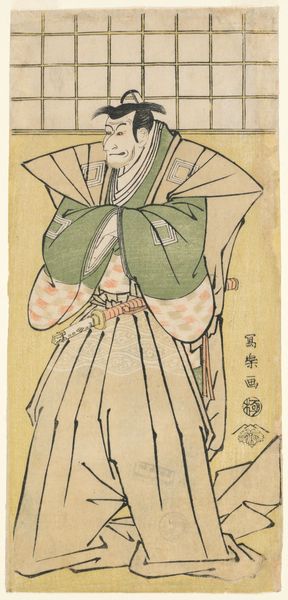
Portrait of the Ōbaku Zen Monk Jifei Ruyi (Sokuhi Nyoitsu) 1666
0:00
0:00
painting, watercolor
#
portrait
#
water colours
#
painting
#
asian-art
#
watercolor
#
watercolor
Dimensions: Image: 43 1/8 × 17 5/16 in. (109.5 × 44 cm) Overall with mounting: 79 1/4 × 22 1/4 in. (201.3 × 56.5 cm) Overall with knobs: 79 1/4 × 24 3/8 in. (201.3 × 61.9 cm)
Copyright: Public Domain
Curator: We’re looking at a portrait of the Ōbaku Zen monk Jifei Ruyi, also known as Sokuhi Nyoitsu. Painted in 1666 by Kita Genki, this piece captures the essence of the monk in serene detail, rendered with watercolor on paper. Editor: There's an immediate simplicity. The sparseness in the application of color, the raw fiber of that handmade paper… it’s all incredibly delicate. You almost feel like you're witnessing the material process. Curator: The composition relies heavily on verticality, from the hanging scroll format to the staff held by the monk, reinforcing a sense of austere formality. The subtle washes create depth, accentuating the monk's robe and facial features, which serve to ground the portrait. Editor: Notice the handmade quality of the paper; you can see every fiber and inclusion. This work, like other scroll paintings, was meant for a specific setting, for meditation, or teaching moments. Its physicality reminds us of its function. Curator: Precisely, the monk's composed expression directs our gaze inward, prompting contemplation. The stark white border emphasizes the subject, yet there is the calligraphic inscription, integrated skillfully as part of the artwork’s surface itself. Editor: And I am drawn to think about the production of the painting; the grinding of inks, the preparation of the handmade paper. So much time and skill went into preparing the surface itself. You begin to understand its inherent value in terms of time and materials. Curator: Yes, the calligraphic inscription functions visually as well, enriching the formal dynamic between text and image within the painted scroll. This synthesis, however, reveals its deepest contemplative intent, which serves to reinforce the notion of stillness in motion. Editor: The intentionality evident in the materials really draws me into its social context. You sense how closely tied craft and contemplation were and are within Zen practice and beyond. Curator: The artist has brilliantly articulated inner peace through form, a tranquil representation that transcends simple portraiture, becoming a mirror for our own introspection. Editor: Thinking about the materials reminds us that artworks like these are records of skill and material resources from specific places. Seeing them prompts us to explore similar practices.
Comments
No comments
Be the first to comment and join the conversation on the ultimate creative platform.
